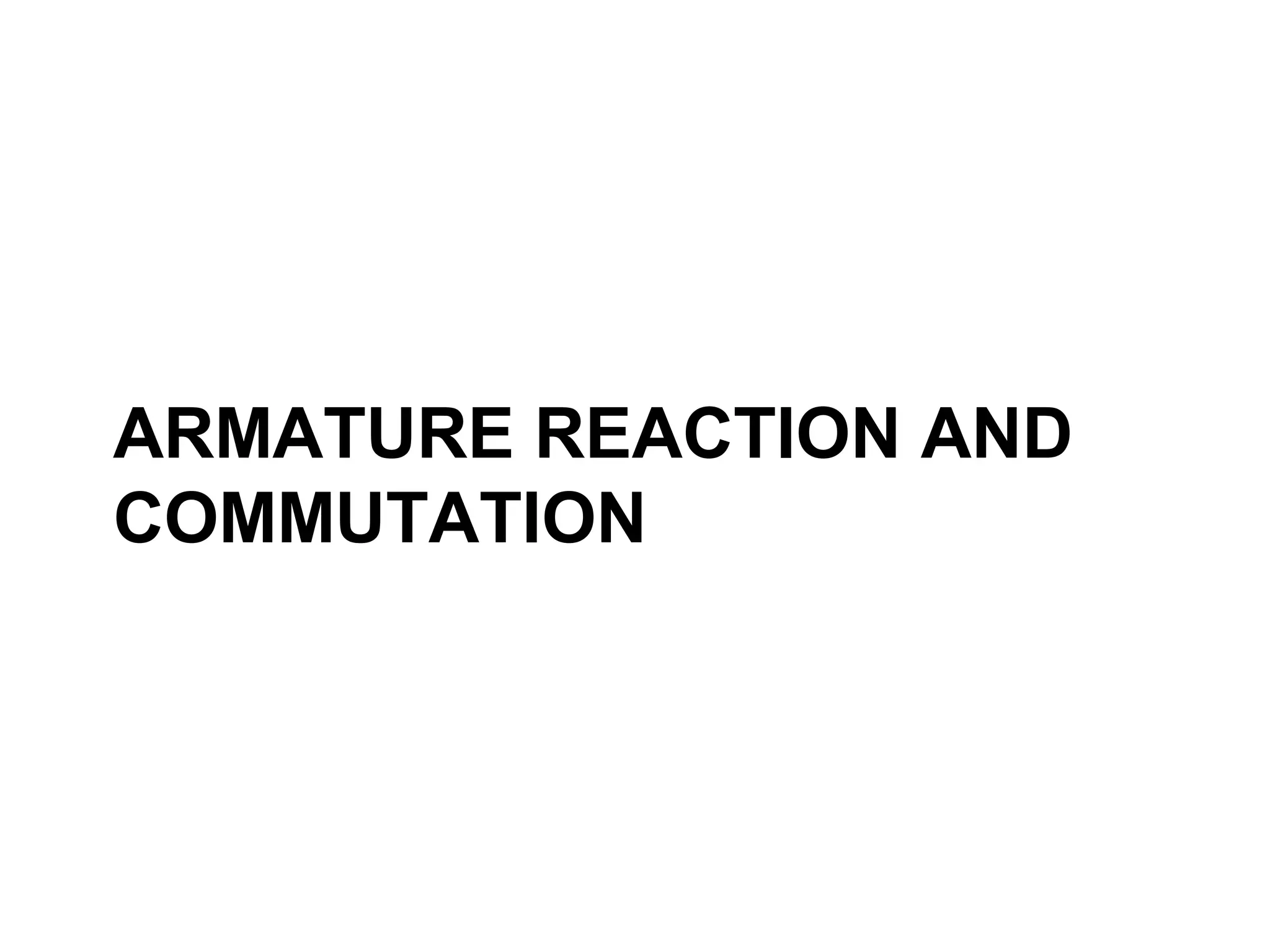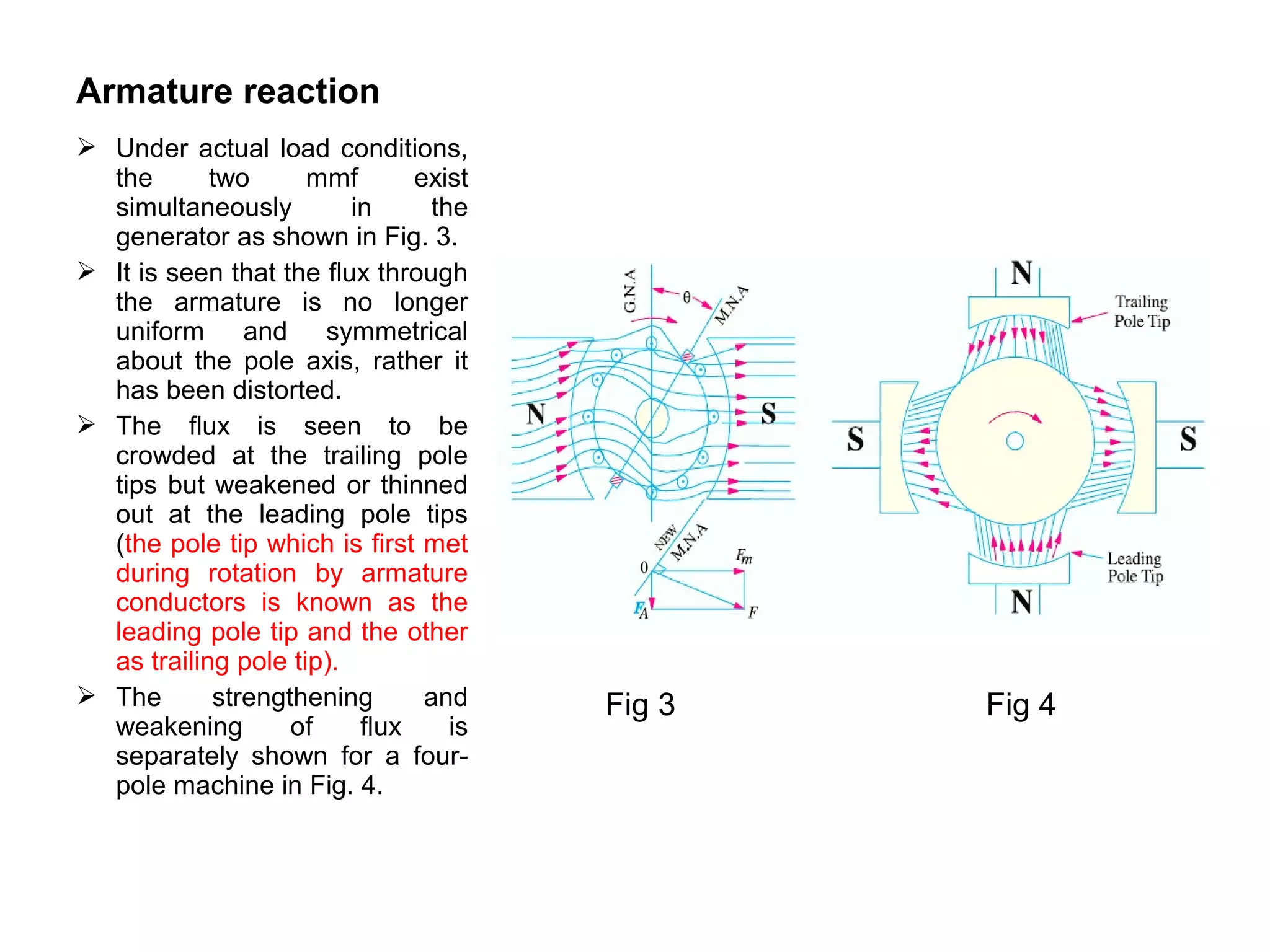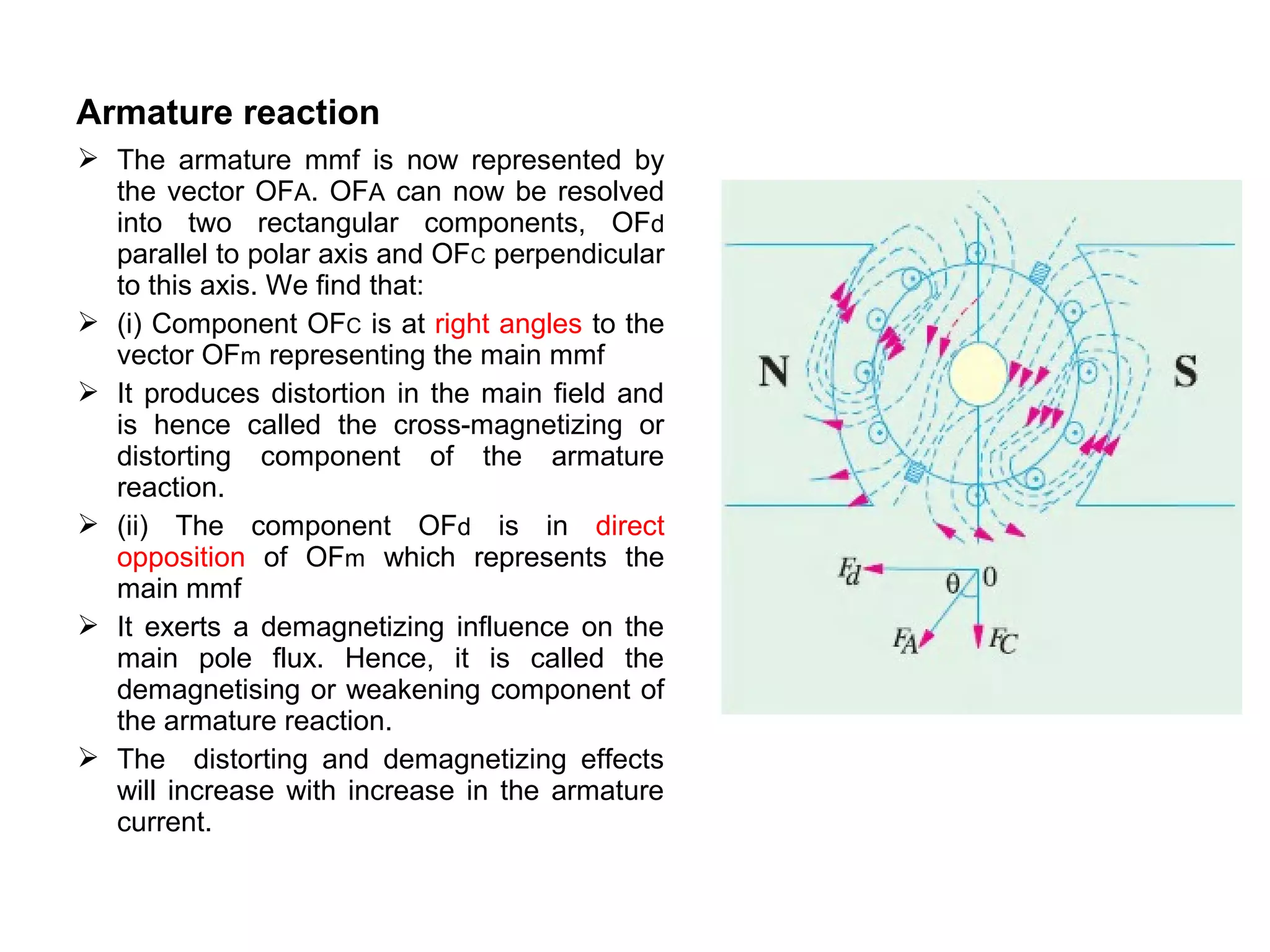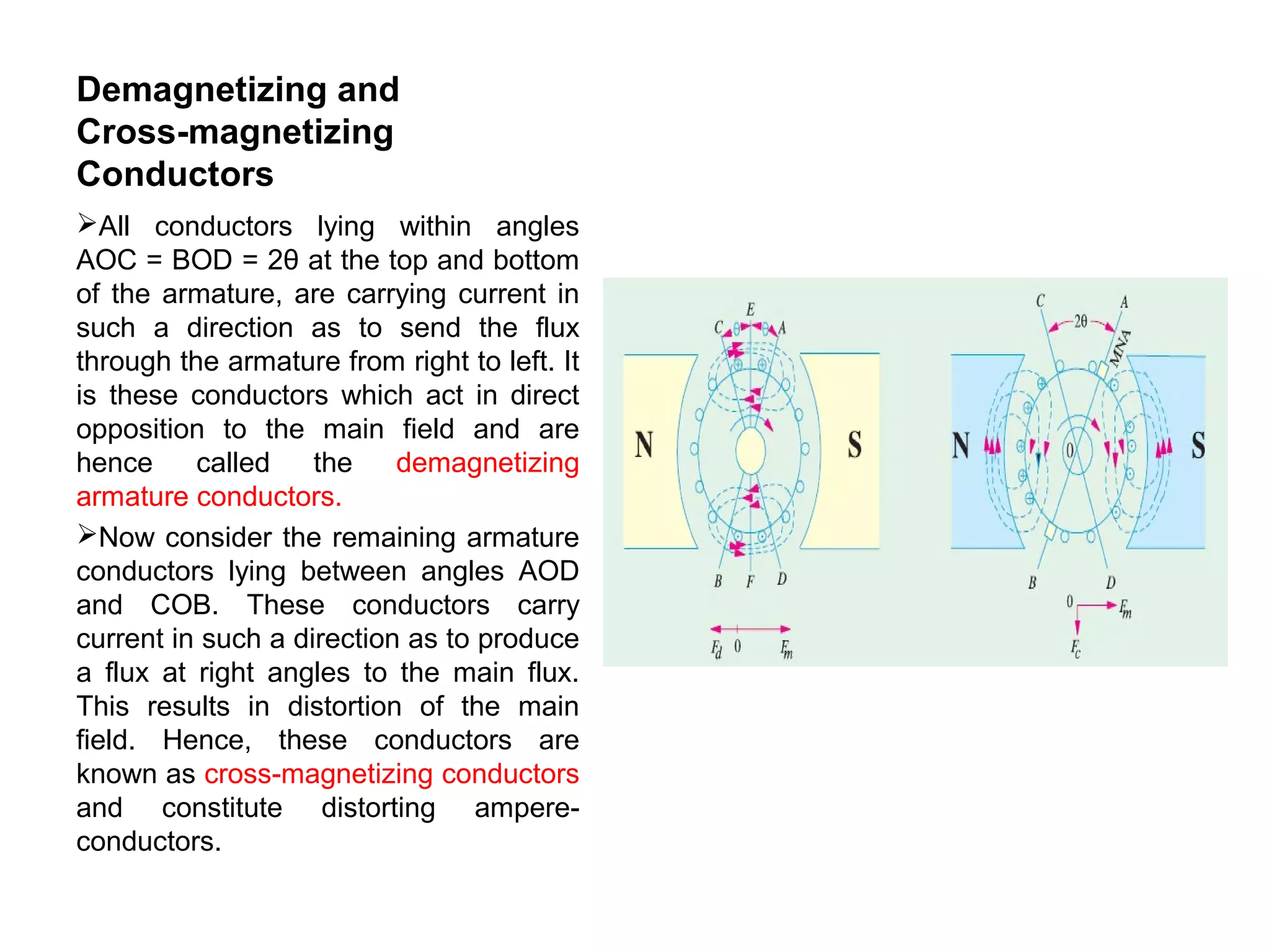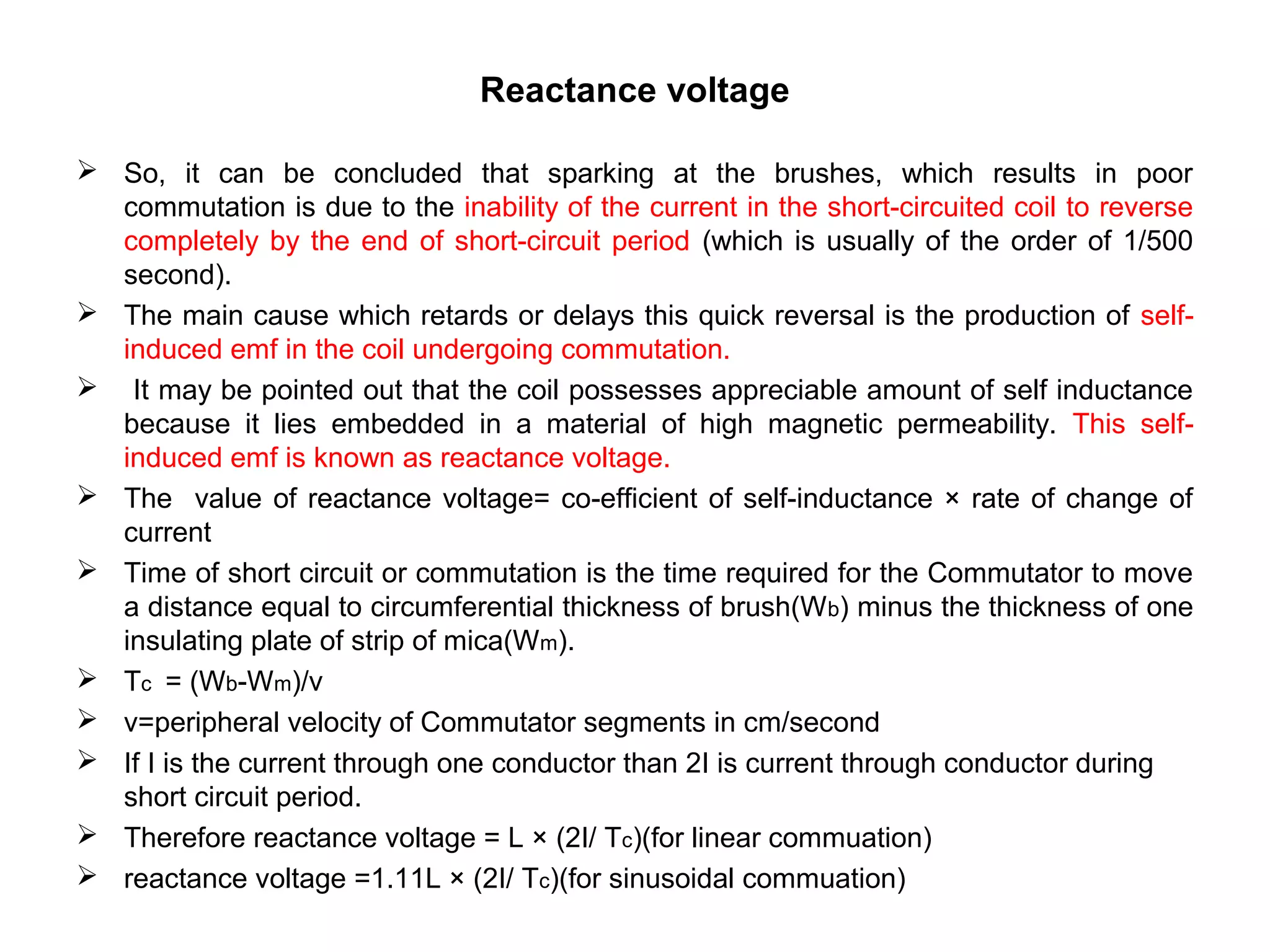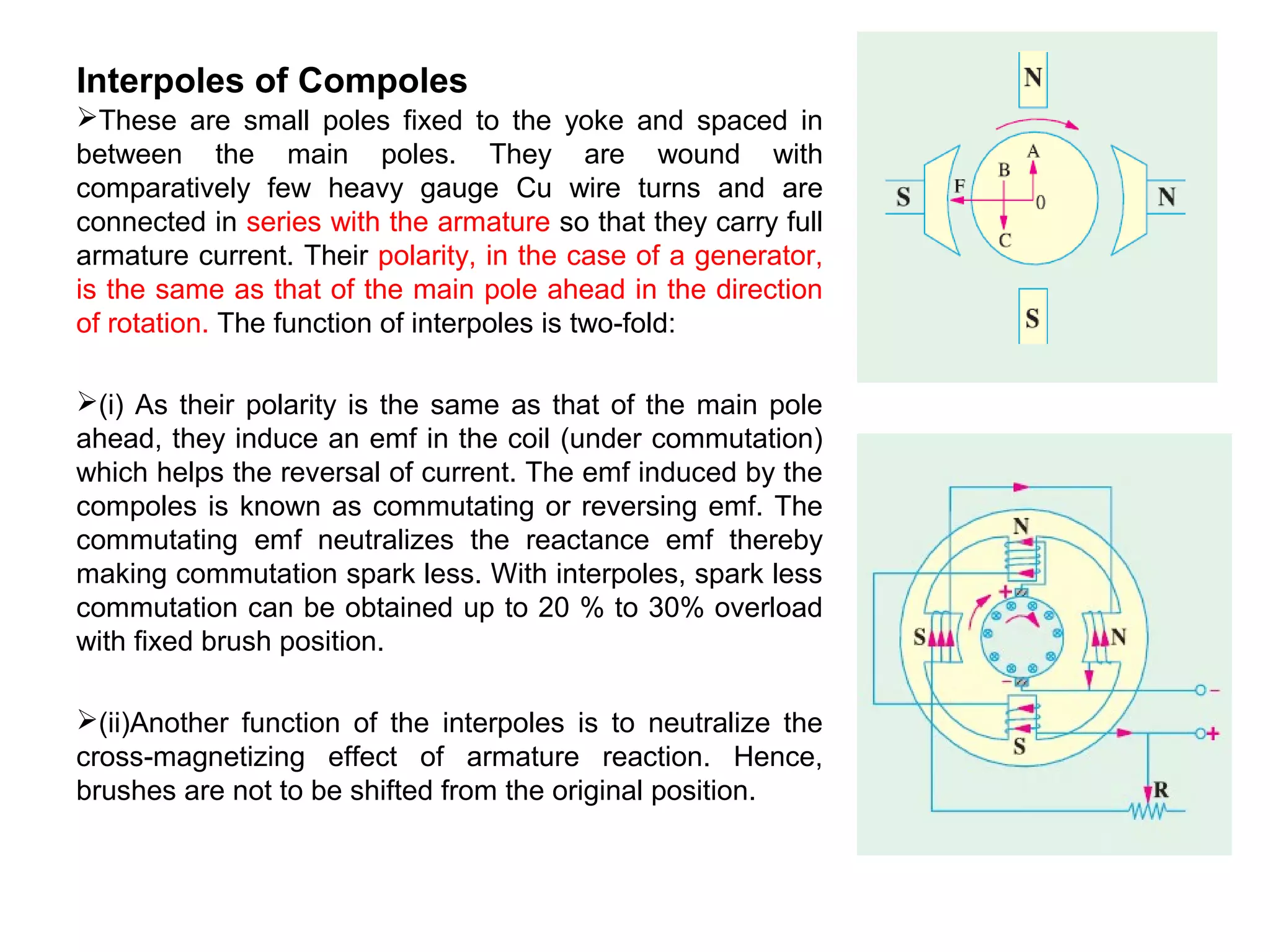The document discusses armature reaction and commutation in DC machines. It describes how armature reaction demagnetizes and distorts the main magnetic field, requiring brush shift. Commutation involves the reversal of current in armature coils as they pass between poles. Sparking can occur due to reactance voltage impeding quick current reversal. Methods to improve commutation include resistance commutation using carbon brushes and EMF commutation using interpoles to neutralize reactance voltage.

